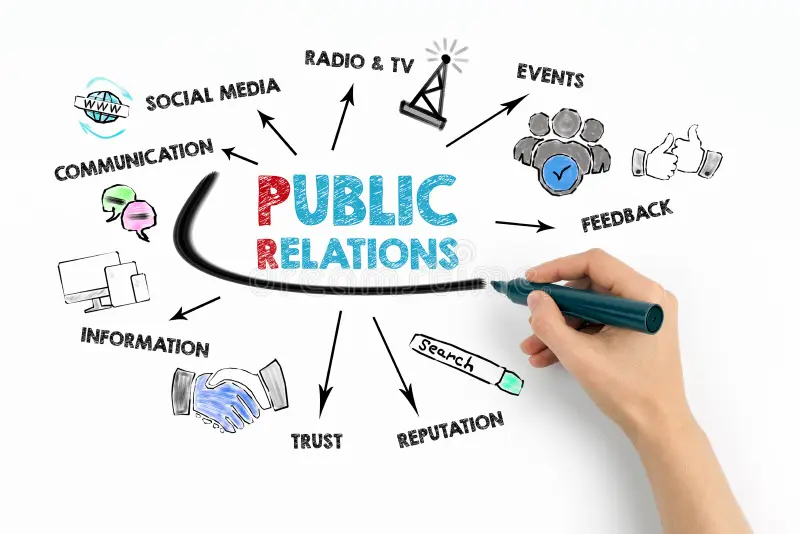
How Public Relations Professionals Shape Media Narratives
Key Takeaways:
- Public relations (PR) professionals play a crucial role in shaping media narratives by crafting and disseminating strategic messages that align with organizational goals.
- Understanding media logic and the operational mechanics of news production is essential for aligning PR efforts with media expectations.
- Utilizing digital media enhances PR professionals’ ability to influence public perception directly and swiftly shape media narratives in real time.
- Building strong, trust-based relationships with journalists and media outlets is vital for successfully shaping narratives and securing media coverage.
- Continuous monitoring and adaptation to the media landscape allow PR professionals to maintain control over their narratives and respond promptly to changes.
Introduction
In the constantly evolving realm of communications, public relations professionals are navigators of the complex media landscape, harnessing the power to influence and shape public narratives. With the sheer volume of information circulating daily, organizations rely on PR experts to strategically craft stories that amplify their messages while minimizing negative impacts. Through a strategic blend of messaging, relationship-building, and media acumen, these professionals ensure that their organizations not only participate in the public dialogue but lead it. As the gatekeepers of organizational narratives, public relations professionals wield significant influence, making their role indispensable in today’s interconnected world.
Crafting Strategic Messages
The ability to craft strategic messages that resonate with the media and the public is at the core of shaping media narratives. PR professionals excel at developing insightful, engaging content that aligns with organizational values and objectives. These professionals can craft compelling and memorable messages by carefully considering the target audience’s preferences, cultural nuances, and emotional triggers. This requires a delicate balancing act of creativity and strategic thinking.
The skills necessary for crafting such impactful messages are often honed through rigorous education, such as pursuing a public relations online degree. These programs provide essential training in communication theories, media dynamics, and strategic planning, equipping graduates with the knowledge and capabilities to manage media narratives effectively. By understanding the intricacies of message tailoring and narrative framing, PR professionals can guide how stories are reported and perceived, ensuring a favorable portrayal of their organizations.
Understanding Media Logic
To adeptly shape media narratives, PR professionals must deeply understand media logic—the principles and practices governing how news is framed, produced, and distributed. This encompasses recognizing what makes a story newsworthy, grasping the timing and nuances of news cycles, and appreciating various media outlets’ aesthetic and editorial preferences. By aligning PR strategies with media logic, professionals enhance their chances of effectively capturing media attention and shaping the narrative discourse.
Aligning strategic messages with media logic involves anticipation and foresight, as media outlets operate under tight deadlines and constant competition for audiences’ attention. PR professionals who master this alignment can secure and influence media coverage, ensuring their narratives occupy a prominent position within the public sphere. This involves crafting press releases, pitching story angles, and preparing spokespeople to address complex topics while adhering to media protocols and preferences.
The Power of Digital Media
Digital media’s emergence has revolutionized how PR professionals influence media narratives, extending their reach and capabilities beyond traditional channels. Social media platforms, online news portals, and digital content hubs provide direct and immediate pathways to engage with target audiences. This digital revolution has created a dynamic and interactive media landscape where PR professionals can shape and shift narratives in real time.
Digital media affords several advantages, such as rapidly disseminating information, engaging audiences in meaningful conversations, and gathering instant feedback. By leveraging these platforms, PR professionals can steer narratives and address viewer perceptions as they unfold. Moreover, digital tools present valuable data and insights into audience preferences and engagement behaviors, facilitating refined and targeted narrative strategies. Through analytics and social listening, PR experts can adapt and tailor messages to resonate with diverse audiences, continually shaping public perceptions.
Relationship-Building with Media
Creating and maintaining solid, trust-based relationships with journalists and media outlets is pivotal for successful narrative shaping. PR professionals understand that establishing credibility and reliability positions them as trustworthy information sources in the eyes of the media. This relationship-building process involves regular communication, timely press releases, exclusive interviews, and insightful comments on industry developments.
A strong relationship with media personnel enhances the likelihood of favorable coverage and provides PR professionals with valuable insights into industry trends and potential story angles. By nurturing these relationships, PR professionals become partners in storytelling, collaborating with journalists to craft balanced and accurate narratives. This partnership fosters mutual respect and trust, ensuring PR professionals have a voice in shaping the narratives that matter most to their organizations.
Read Also: How to Prepare Your Business for a Commercial Cleaning Service
Monitoring the Media Landscape
In the ever-evolving world of media, continuous monitoring of the media landscape is essential for maintaining control over narratives. PR professionals employ various tools, techniques, and software to track media coverage, assess public sentiment, and identify emerging trends. By staying informed, they can quickly respond to shifts in the narrative, correct misinformation, and capitalize on positive developments.
This proactive approach enables PR professionals to steer the narrative effectively and sustain the organization’s desired image and message. Constant vigilance and the ability to adapt to changing media dynamics are crucial to maintaining control over the narrative and ensuring that organizational objectives are met. Through continuous monitoring, PR professionals remain at the forefront of the media landscape, ready to act and shape narratives as necessary.
Conclusion
The role of public relations professionals in shaping media narratives is powerful and dynamic, extending far beyond mere message dissemination. By strategically crafting messages, understanding media logic, leveraging digital tools, building solid media relationships, and vigilantly monitoring the media landscape, PR experts hold the keys to shaping public discourse and influencing perception. In a world where information inundates the public sphere, strategically shaping narratives is an invaluable asset for organizations, helping drive positive engagement and secure organizational objectives. As the architects of their organizations’ stories, PR professionals continue to shape and redefine the communication landscape, ensuring their voices are heard and their narratives are controlled.

